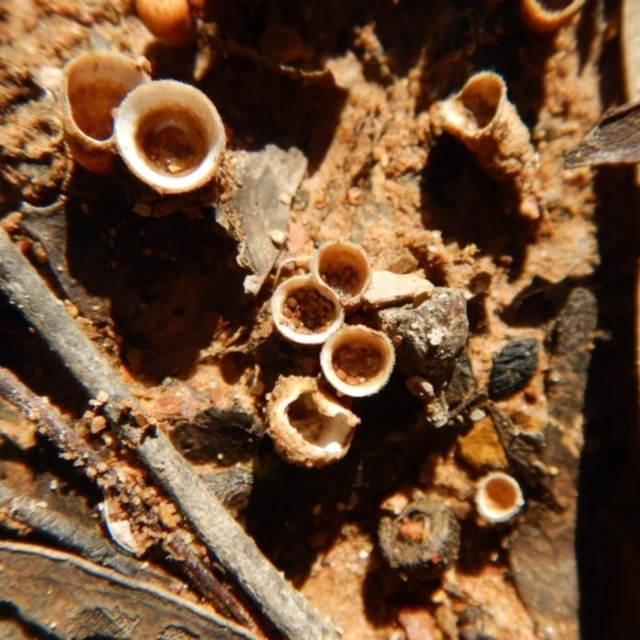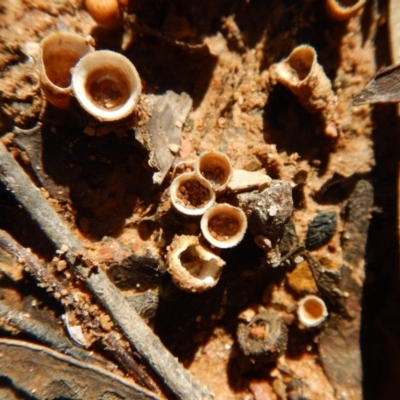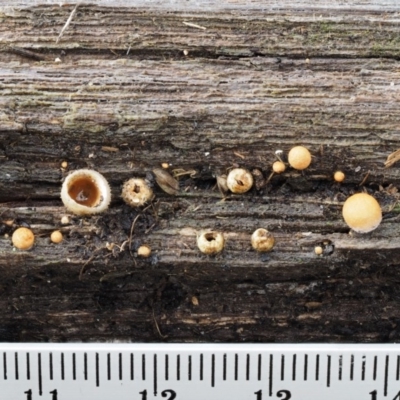Nidula sp. (A bird's nest fungus)
The fruit body is a small urn- or cup-shaped structure in which, at least initially, there are a number of small ‘eggs’ (or peridioles). The fruit body may be up to 15 or so millimetres in height and 8 wide at the top (but often less). The outer surface may be creamy, greyish or some shade of brown and often is hairy. When immature a membrane (or epiphragm) covers the top of the ‘urn’. The disc-like peridioles are 1-2 millimetres in diameter, greyish, light brown to reddish brown and embedded within a gelatinous material when fresh. They are not attached to the inner wall of the ‘urn’.
The gelatinous material may dry out and not be obvious but it leaves the peridioles firmly glued to each other (or the inner wall), making it almost impossible to detach just one peridiole cleanly from its surrounds. In the ‘gelatine-less’ genera, individual peridioles can be picked out fairly easily.
The fruit bodies appear on rotten wood or other plant litter in a wide variety of habitats and usually in groups, often quite large.
Look-alikes
Crucibulum – The peridioles are whitish, pale grey or yellowish. There is no gelatinous material and each peridiole is attached to the inner wall of the ‘urn’ by a fine cord. An epiphragm is present in immature fruit bodies. I have seen fresh Crucibulum fruit bodies grow inside old ‘cups’, so that the wall of an old fruit body surrounds the new fruit body. I have not seen that in the other genera.
Cyathus – The peridioles are dark brown to black, there is no gelatinous material and each peridiole is attached to the inner wall of the ‘urn’ by a fine cord. Immature fruit bodies have an epiphragm.
Nidularia - The fruit body is roughly globose, up to 10 millimetres in diameter and breaks irregularly to expose the brown peridioles (which had been embedded in gelatinous material and had no attaching cords). Hence, in this genus there is neither ‘urn’ nor ‘cup.
A few other genera have fruit bodies no more than 3 millimetres in diameter.
There is a key to the genera of Birds nest fungi at https://canberra.naturemapr.org/Community/Categories/Guide/1736 .
Nidula sp. is listed in the following regions:
Canberra & Southern Tablelands
Species information
- Nidula sp. Scientific name
- A bird's nest fungus Common name
- Not Sensitive
- Local native
- Non-invasive or negligible
- Up to 1026.69m Recorded at altitude
- Machine learning






























